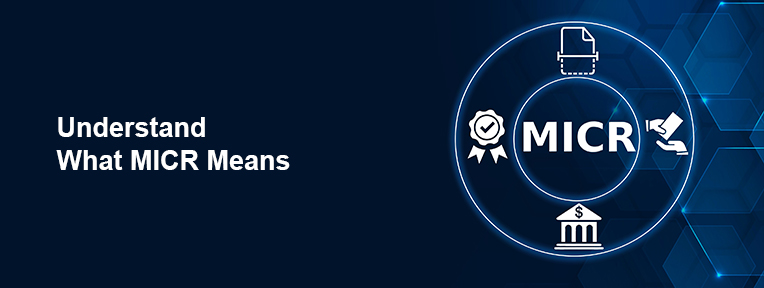
What is the MICR Code in Your Passbook? Format, Use & Where to Find It
Posted on Tuesday, July 15th, 2025 | By IndusInd Bank
If you’ve ever glanced at your bank passbook or cheque leaf and noticed a series of numbers printed in a unique font at the bottom, you’ve likely come across the MICR code—a small but mighty part of the banking system.
While often overlooked, the MICR code plays a key role in keeping cheque transactions smooth, secure, and error-free. But what exactly is it, and why does your passbook feature it so prominently? Let’s break it down in simple terms.
What is MICR Code? (And What It Stands For)
MICR stands for Magnetic Ink Character Recognition. It’s a 9-digit code used to identify the location of a bank branch participating in the electronic clearing of cheques.
Printed using magnetic ink and a specialised font, the MICR code enables quick and automated reading by cheque-sorting machines. This helps banks speed up the clearing process and avoid errors that could occur with manual processing.
Each bank branch has a unique MICR code—no two are the same.
Format of MICR Code
The MICR code may seem like a random set of digits at first glance, but it follows a specific structure. Let’s say your MICR code is 400234002. Here’s what it tells us:
| MICR Digits | What do they represent? | Example |
| First 3 digits | Represent the city code, usually aligned with the PIN code area | 400 – City code (Mumbai) |
| Next 3 digits | Denote the bank code | 234 – Bank code (specific to your bank) |
| Last 3 digits | Identify the specific branch | 002 – Branch code |
This structure ensures that every participating branch in the banking system has a unique identifier.
Also Read: Want to Move Your Savings Account to a New Branch? Here’s What to Do
Where Can You Find the MICR Code?
Finding the MICR code is easy—it’s right in front of you if you know where to look.
- In your passbook: Usually printed on the first page alongside other details like account number and IFSC code
- On a cheque leaf: Found at the bottom, typically next to the cheque number and account details
- Netbanking and mobile apps: Many banks now display MICR codes within the app or account profile section
- Bank websites or customer care: You can search for it using your branch name if needed
How Does the MICR Code Work?
Behind the scenes, when you deposit a cheque, the MICR code is read by a machine at the clearing house using magnetic ink recognition technology. This machine reads the magnetic ink to identify:
- The city where the cheque is being cleared
- The bank and branch details
- Whether the cheque is valid and correctly routed
This technology reduces manual work, minimises errors, and accelerates the entire cheque-clearing cycle.
Also Read: What is Cheque Number
Why is the MICR Code Important?
MICR codes may not be something you use daily, but they’re essential for:
- Cheque clearing: Ensures the cheque reaches the right branch quickly and securely
- Electronic Clearing Service (ECS): Used in auto-debits like EMIs or SIPs
- Preventing fraud: MICR codes help confirm the authenticity of cheques
- Bank branch identification: Especially useful in rural or less-digitised areas
In short, the MICR code adds a layer of speed, security, and accuracy to traditional banking processes.
Final Thoughts: Why You Should Know Your MICR Code
While digital banking is now the norm, the MICR code continues to be an important part of the system—especially when it comes to cheque-based transactions and ECS mandates.
So, the next time you open your passbook or look at a cheque, take a moment to notice that little 9-digit code. It’s a quiet workhorse, helping your transactions move through the banking network smoothly.
Want to find the MICR code for your IndusInd Bank branch? Just check your passbook, log in to your mobile app, or use the branch locator on our website.



 Offers
Offers Rates
Rates Debit Card Related
Debit Card Related Credit Card Related
Credit Card Related Manage Mandate(s)
Manage Mandate(s) Get Mini Statement
Get Mini Statement
 categories
categories Bloggers
Bloggers Blog collection
Blog collection Press Release
Press Release


